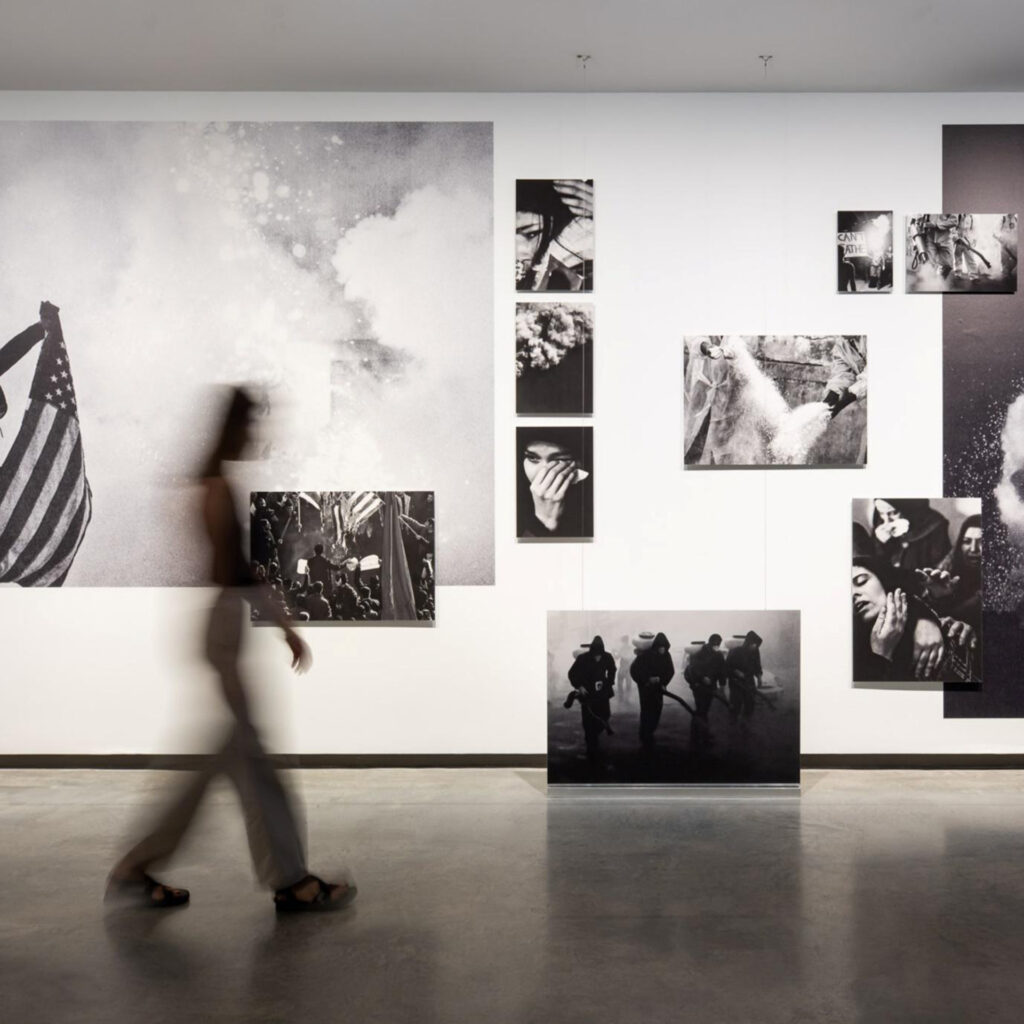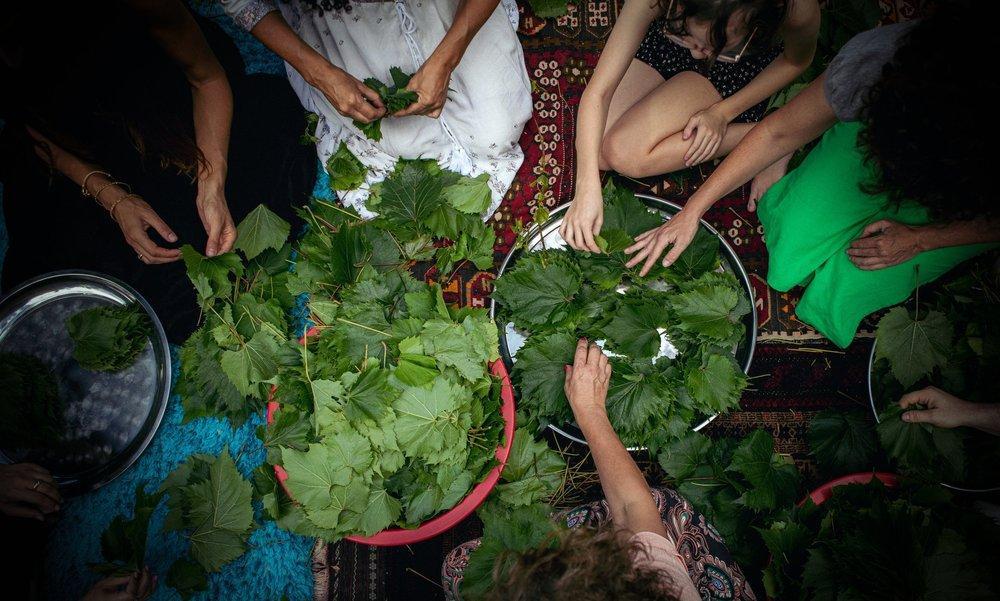In the nineteenth century, French philosopher Victor Cousins seeded the idea of l'art pour l'art (art for art's sake)[1], a phrase that has echoed into contemporary neo-liberal discourse to negate the need to consider politics in art encounters. However, for bodies that exist within any intersection of marginalisation and oppression, there is an understanding that the encounter of art is charged with privilege and embroiled in politics.
Lola Olufemi’s missive, ‘art is best utilised as a weapon, a writing back, as evidence that we were here,’[2] has become one of my anchors amongst the tepid waters of apolitical approaches to artistic output and discourse. Here, Olufemi asserts that artists should not and do not hold the power to enact mass systemic change, but that the affect from the experience of artwork on individuals is where the hopeful spark for change remains. As a young, Black, queer theorist Olufemi embodies the importance and responsibility of the who in artistic making, presenting and critiquing in a way that is irrevocably tied to the consequence(s) of an encounter.
I am a queer Tajik Afghan woman born in Kabul and raised safely on stolen land in Australia. Afghan women bear the viscosity of a particular type of patriarchy. One that is thickened by centuries of imperialism and waves of colonisation that have led to the division of an entire region, continued oppression of Hazara peoples and unparalleled amounts of cultural erasure. Outside of my blood family and regardless of the levels of estrangement one can feel (particularly as openly queer in the Afghan diaspora), I am part of the global network of displaced peoples rebuilding and resettling and where there is capacity, unlearning these conditions of existence.
Our lived experiences and how they inform one’s cognition are inseparable from any art encounter, and so I posit this abridged context of my personhood with the reading of two works: Act III: Love (or what if this is love?) (2023) an installation exhibition by Maissa Alameddine, shown at Firstdraft and Aura (2020-23) a photo-media installation by Hoda Afshar, exhibited as part of The National 4 at the Museum of Contemporary Art. Each work is underpinned by the inability to return — and improbability of returning — to what once was.
Maissa Alameddine’s Act III: Love (or what if this is love?) explores the idea of ‘migration as a chronic injury’[3] and the influence this imposes on selfhood, connection to kin, ancestral lands and cultural objects. Drawing on her performance practice, this exhibition is the last of three acts inquiring into tensions of self-acceptance within a diasporic existence.
Harnessing the triangular shape of Gallery 2 at Firstdraft, the exhibitionis an open embrace upon entry. Displayed as a multi-channel V-shaped projection, the work comprises layers of images and overlapping soundscapes. In the video, Alameddine reconnects with the areeshi (grapevine) located in her suburban Sydney home, which became neglected and overgrown during the COVID-19 lockdowns. Here, we see hands sorting, cleaning, and preparing grapevine leaves, before the video pans out to Alameddine and her kin. Exuberant conversation, laughter, song, and dance envelop the gallery. In front of the projection is an assortment of carefully laid objects; dried leaves await the act of pickling and a carefully draped Lebanese qombaz awaits its wearer. On a wall are pocket-size photographs of individuals present in Alameddine’s courtyard signalling the act of rebuilding mementos that can be lost or left behind upon migration to new soil. The subjects of each of the portraits are depicted twice; either staring solemnly at the camera or in more carefree expressions. Overlapping carpets provide an invitation to sit and immerse yourself in the work.
Act III: Love captures the joy of reclaiming cultural rituals as a praxis for healing from the effects of migration or displacement. The work has the grandeur of theatre in its videographic composition yet is understood as an unrehearsed gathering among blood and chosen family. Though not explicit, there is a discrete queer coding to the gathering, which is only understood if a viewer has comparable experiences of diasporic existence.
Alameddine offers the audience a moment of complete selfhood through communal gathering, with a promise of return to continue in stories and songs amongst loved ones. Through acts of performance, bodies connect the past with the present and embody ‘what is often only imagined, lost or forgotten’ [4] in cultural practices tied to homelands. In this way Act III: Love presents ‘lenticularity of diasporic existence’[5] as summarised by Ghassan Hage, whereby nostalgia is redefined not as what was or can never be but as an act of re-placing one’s existence somewhere else. In immersing yourself in Alameddine’s world, particularly with a lived experience of migration or displacement, you are inhabiting a familiar memory that is not your own. Not only are viewers reminded of the joy of reclaiming culture, but also of the fragility of authenticity when we are stripped from ancestral places and are attempting a full life, settling on stolen lands, emblazoned by the continuing terrors of colonialism. Act III: Love becomes Alameddine’s concluding chapter, leaving the reader with an open opportunity to counter diasporic experiences of cultural attrition with the possibilities of remaking and rebuilding.
If Alemeddine’s work provides an opportunity for diasporic bodies tied to the SWANA region, then Hoda Afshar’s Aura, presented at the Museum of Contemporary Art for The National 4, is a rich, multi-referential well of reflection on the nature and outcome of imperial and oppressive systems. Aura is ambitiously divergent from Afshar’s known practice stemming from her photojournalism roots in Iran. The title of the exhibition references the Greek word meaning ‘to breathe’ — a subconscious bodily action weaponised in 2020. In this work, Afshar carefully selects and manipulates images that classify the atmospheric experience of the beginnings of the COVID-19 pandemic. 2020 was a year where fear of the unknown caused a shift in social relations on a global scale, where the failures of existing systems were highlighted through the untimely loss of over 1.8 million individuals. A year where visibility towards global Black justice movements highlighted the insidiousness of systemic racism, and only through the labour of First Nations activism on this continent, that home-grown reckoning was seeded.[6] A global mass disruption that rekindled fundamental abolitionist hopes, so quickly engulfed by the apathy of capitalism.
Aura presents as an installation of image fragments, grainy and carefully recomposed. Images are at various scales, both in size and subject, intended to engross the viewer. It concludes with Afshar’s single-channel video: Undone (2022), depicting a reversal of decontextualised bomb sites (archival footage collected by Afshar since 2011) with an overlay of varied heartbeats.
During my first encounter with Aura, I felt a visceral response, a heightened hesitation reverberating through my nervous system. My eyes and body were unwilling to pass beyond the first image, and I could not further engage with the work. Afshar’s exemplary practice demonstrates longitudinal engagements with people or communities depicted through her photography, often embedding agency in the subject and the viewer. This was the first time I experienced Afshar’s work through images constructed from an archive. For this reason, when I first approached Aura, I was unsure who it was for. Certainly not for those who embodied or resonated with the experiences on display. Certainly not for me, unable to allow my eyes to fall on bomb sites being undone through the act of rewinding the playback of a recorded airstrike.
My initial response was triggered by vestiges of grief, activated by images of bomb blasts known to me to be mainly from the South West Asia and North Africa (SWANA) region. Knowing the depth of inquiry Afshar integrates into her works, I felt it important to return to the exhibition and better understand the artist's intent.
Moving through the installation a second time, I was acutely aware of what and who was presented and not represented. For a work that speaks to witnessing COVID-19, there was a distinct absence of dead bodies. An image of a Black Lives Matter sign tightly cropped to spell ‘lives matter’. Images depicting the inferno of fire that swept the Australian continent in the summer of 2019-20, decontextualised from the systems of colonisation, which sparked these events. Clouds of bomb blasts and fiery ash appear to fall like stardust, absent from the destruction of life and land. The fear, grief and anger welling in women's eyes feature throughout.
The exhibition didactic for Aura refers to a globally exhibited photographic installation by Edward Steichen; The Family of Man, which opened at the Museum of Modern Art (New York) on 25 January 1955.[7] In this canonical work, ethnicity is flattened under a white neutralising gaze with the intent of presenting ‘the beautiful universality of human experience.’[8] In Afshar’s reference to this photo essay, universality is replaced with references to how systems of power and the outcomes of destruction are enabled.
The majority of images in Aura are tightly cropped and stripped of context. The installation is a careful selection of images that represent the explosive pace of consumption to global events. It speaks to the experience of self-dissociation through framed witness and the shared (dis)comfort of lockdown in Australia. In the cataclysmic images amalgamated by Afshar, Aura could be read as a literal mirror to remind of and render accountability.
Both artworks consciously forefront hope — one that is offered by the oscillating pendulum between reality versus image-making. Afshar and Alameddine capture moments that reflect the persistence of life anchored by a diasporic gaze. In my encounter with each work, I was held within the limitations of returning, to a previous time or place — known and unknown. These two female artists, born and connected to the SWANA region, present the causes and effects that continue to be sustained by U.S. imperialism on the possession of lands and resources under the guise of safety. If the twenty-first century is ‘the century of displacement and dispossession,’[9] then between these two exhibitions you are held and left with what could have been and what could be.


[1] John Wilcox, The Beginnings of l’Art Pour l’Art in The Journal of Aesthetics and Art Criticism, vol. 11, no. 4, 1953, pp. 360–77.
[2] Lola Olufemi, Feminism, Interrupted: Disrupting Power, Pluto Press, London, 2020, p. 85.
[3] https://firstdraft.org.au/artists/maissa-alameddine (accessed 2 September 2023)
[4] Carrie Mae Weems, Kitchen Table Series, 1990, printed 2003. https://www.nga.gov/collection/art-object-page.209288.html
(accessed 2 September 2023). The photographic series compellingly examines women’s lives. It boldly asserts, in particular, Black womanhood’s complexity, strength, and beauty.
[5] Ghassan Hage, The Diasporic Condition: Ethnographic Explorations of the Lebanese in the World. , University of Chicago Press, Chicago, 2021, p. 83.
The lenticular diasporic condition is a process of splitting the individual as something that happens alongside a splitting of reality itself through the act of geographical relocation from the homeland.
[6] Chelsea Watego, ‘Black Lives Matter: A Brisbane Blacks Manifesto’, IndigenousX, 15 July 2020, https://indigenousx.com.au/black-lives-matter-a-brisbane-blacks-manifesto (accessed 2 September 2023)
[7] Edward Steichen, The Family of Man, New York: Museum of Modern Art, 1955 https://www.moma.org/research/archives/archives-highlights-06-1955 (accessed 2 September 2023)
[8] ‘The Famiy of Man: photography that united the planet — in pictures,’ 6 November 2015, https://www.theguardian.com/artanddesign/gallery/2015/nov/06/the-family-of-man-photography-united-the-planet-edward-steichen (accessed 2 September 2023)
[9]Dawn Chatty, Anthropology and forced migration, in Elena Fiddian-Qasmiyeh et al. (eds), The Oxford Handbook of Refugee and Forced Migration Studies, Oxford University Press, Oxford, 2014, pp. 74–85.
